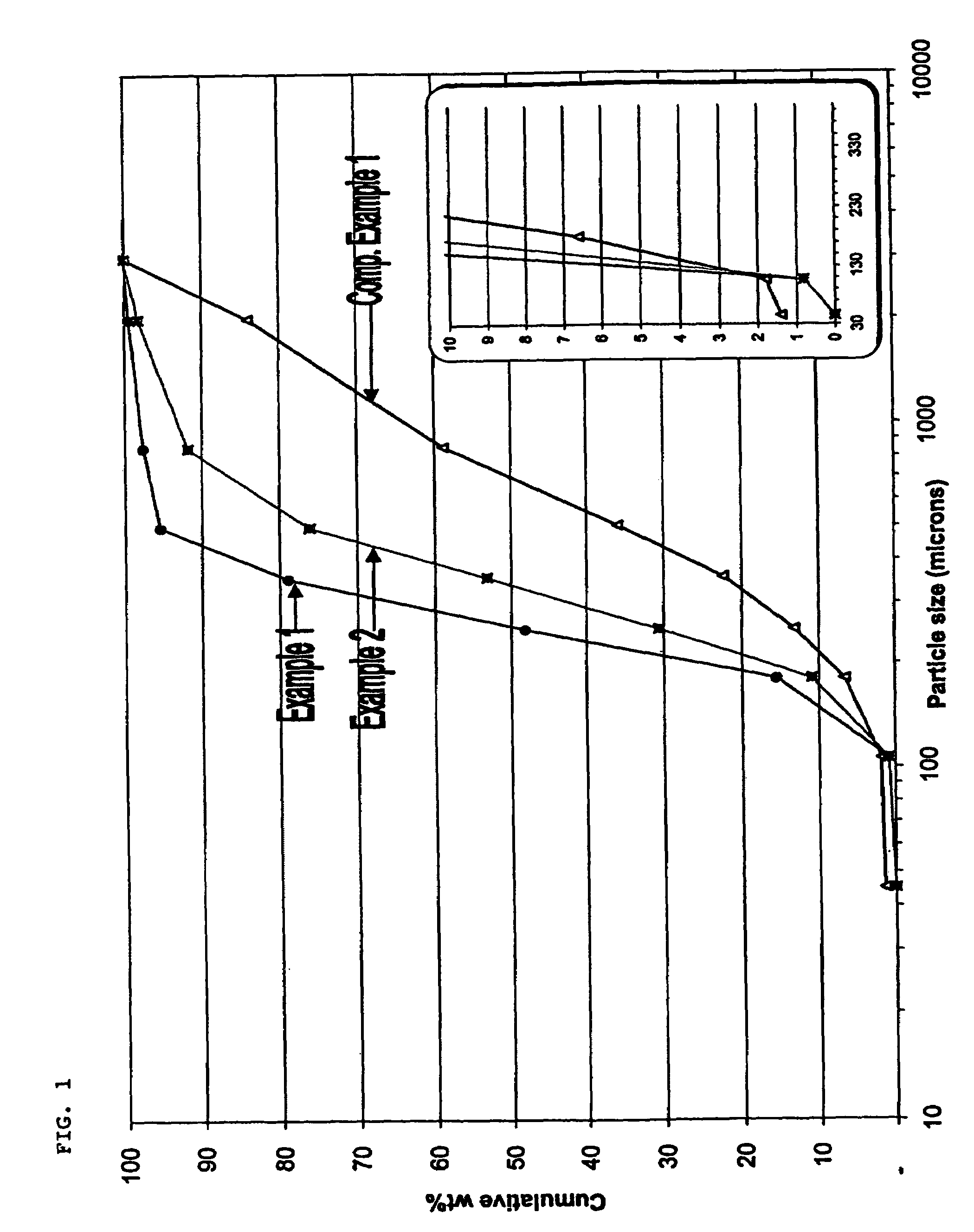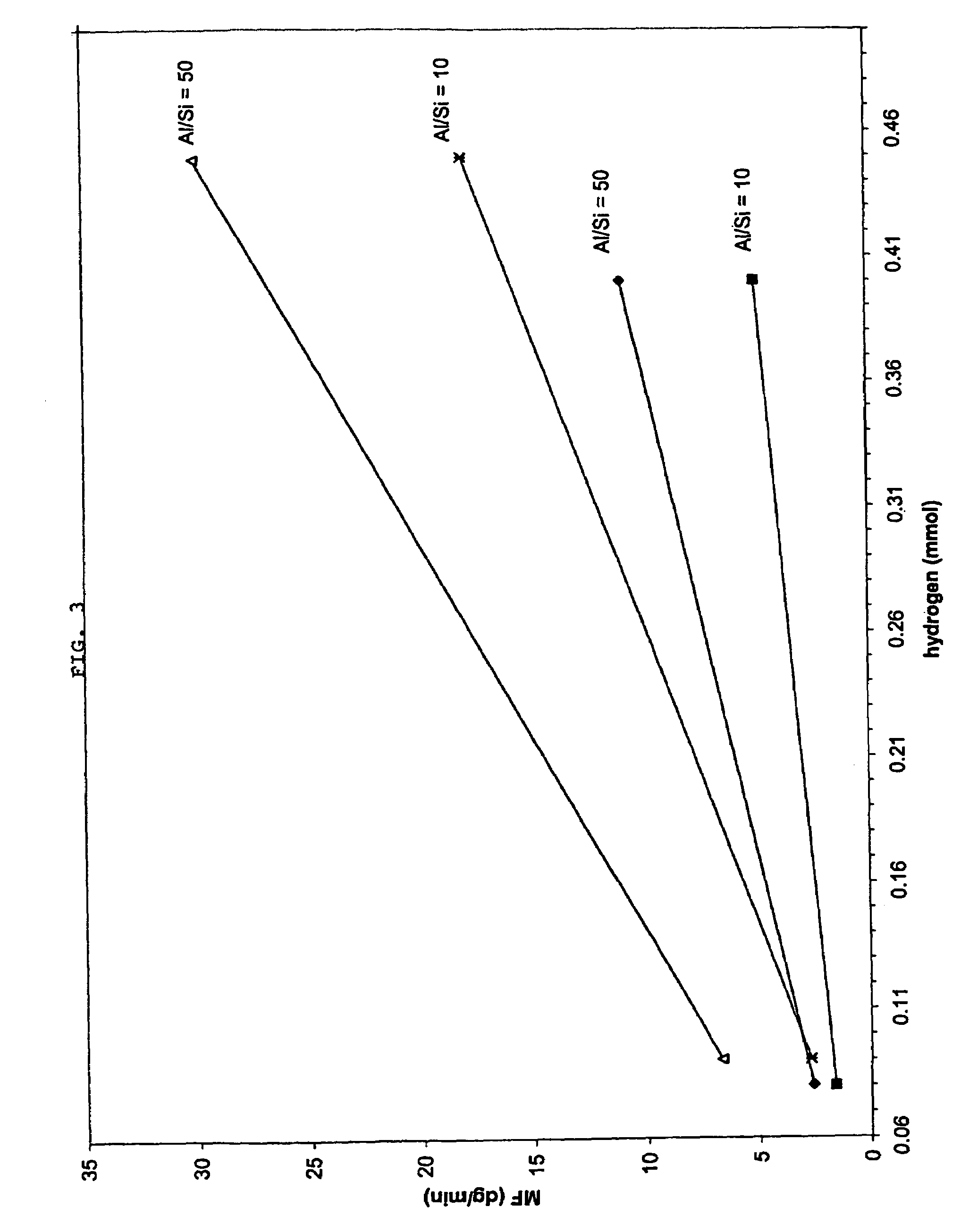Process for forming a ziegler-natta catalyst system having a controlled morphology
a technology of zieglernatta and catalyst, which is applied in the direction of catalyst activation/preparation, physical/chemical process catalyst, chemical/physical process, etc., can solve the problems of sacrificing the original activity and stereospecificity of the catalyst, and morphological optimization typically
- Summary
- Abstract
- Description
- Claims
- Application Information
AI Technical Summary
Benefits of technology
Problems solved by technology
Method used
Image
Examples
example 1
[0030]The pre-catalyst component sample was prepared in accordance with the present invention and then used to prepare a polypropylene sample. Some of the compounds required to prepare the catalyst component sample, i.e., 2-ethylhexanol, tri-n-butylphosphate (BP), di-n-butylphthalate (DnBP), TiCl4, and 1,2-dichloroethane (DCE) were purchased from Aldrich Chemical Company and were used as received. A butylethylmagnesium (BEM) solution containing 24.7 wt. % BEM and 0.47 wt. % TEAL in heptane was purchased from Akzo Nobel and used as received. Toluene and hexane were purchased from Aldrich and dried over activated alumina in preparation for this experiment.
[0031]The support for the pre-catalyst sample was prepared by first charging a round bottom flask with 13.3 g (24.6 mmols) of the BEM solution and 25 mL of toluene. A solution of 2-ethylhexanol in toluene (23 ml of 2.2 M solution) was added over one hour with stirring. The resulting solution was allowed to stir for an additional one ...
example 2
[0036]The procedure of Example 1 was followed except that 1.5 equivalent of BP instead of 1.0 equivalent of BP was used to prepare the catalyst support, thereby forming a pre-catalyst sample from which a PP sample was formed. The PP sample was prepared using 0.09 mol % H2. The resultant fluff particle size was larger (d50=340 μm) than that found from Example 1 (d50=275 μm).
[0037]As shown in Table 1, the melt flow rate of the PP decreased as the amount of BP was increased from 1.0 equivalent to 1.5 equivalent. On the other hand, the xylene solubles content decreased, the crystallinity increased, and the bulk density increased as the amount of BP was increased from 1.0 equivalent to 1.5 equivalent, thus achieving improved polymer properties.
example 3
[0038]The procedure of Example 1 was followed except that 1.5 equivalent of BP instead of 1.0 equivalent of BP was used to prepare a pre-catalyst sample, and a PP sample was prepared using 0.45 mol % H2 instead of 0.09 mol % H2.
PUM
| Property | Measurement | Unit |
|---|---|---|
| temperature | aaaaa | aaaaa |
| temperature | aaaaa | aaaaa |
| temperature | aaaaa | aaaaa |
Abstract
Description
Claims
Application Information
 Login to View More
Login to View More - R&D
- Intellectual Property
- Life Sciences
- Materials
- Tech Scout
- Unparalleled Data Quality
- Higher Quality Content
- 60% Fewer Hallucinations
Browse by: Latest US Patents, China's latest patents, Technical Efficacy Thesaurus, Application Domain, Technology Topic, Popular Technical Reports.
© 2025 PatSnap. All rights reserved.Legal|Privacy policy|Modern Slavery Act Transparency Statement|Sitemap|About US| Contact US: help@patsnap.com



